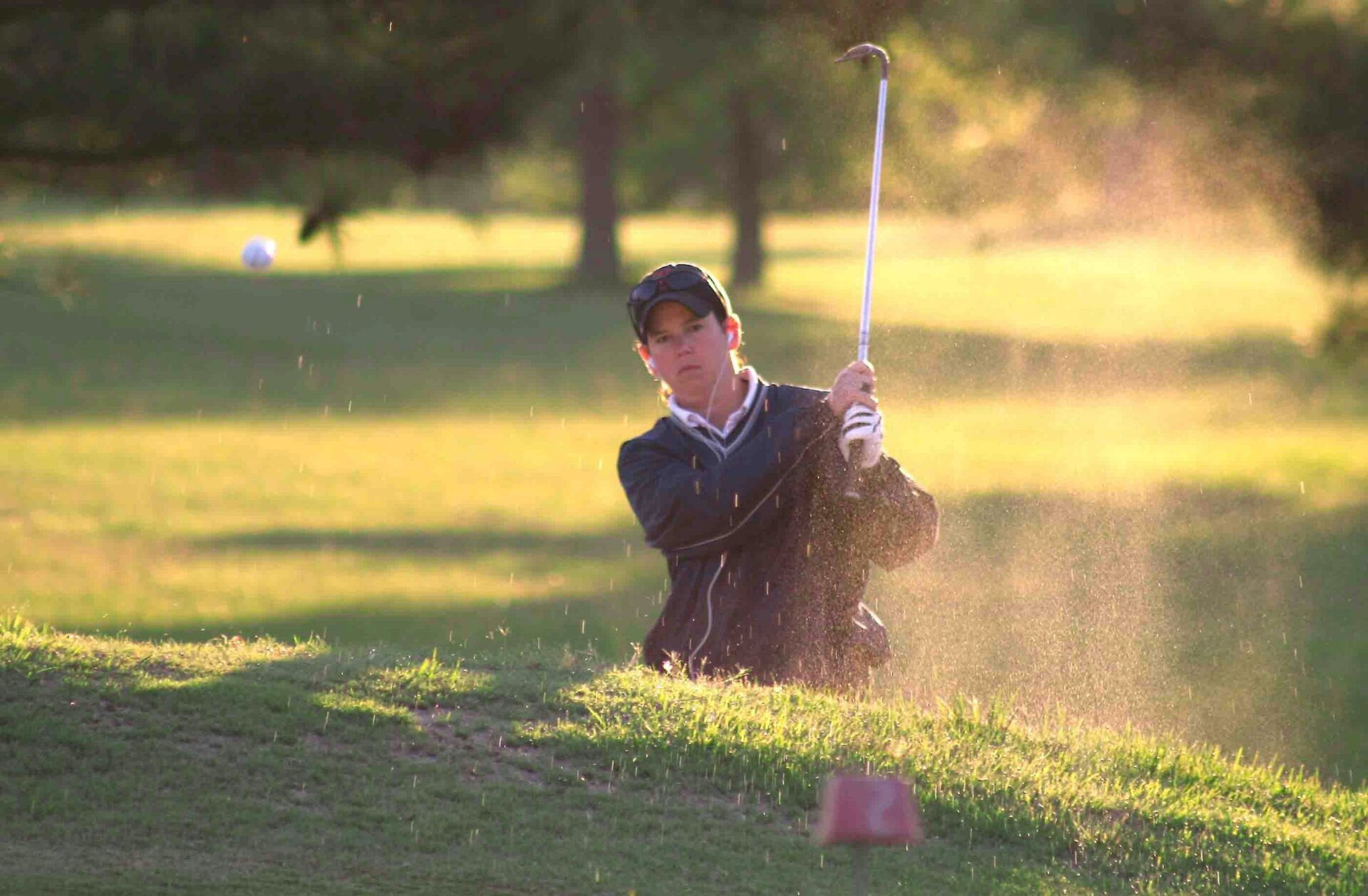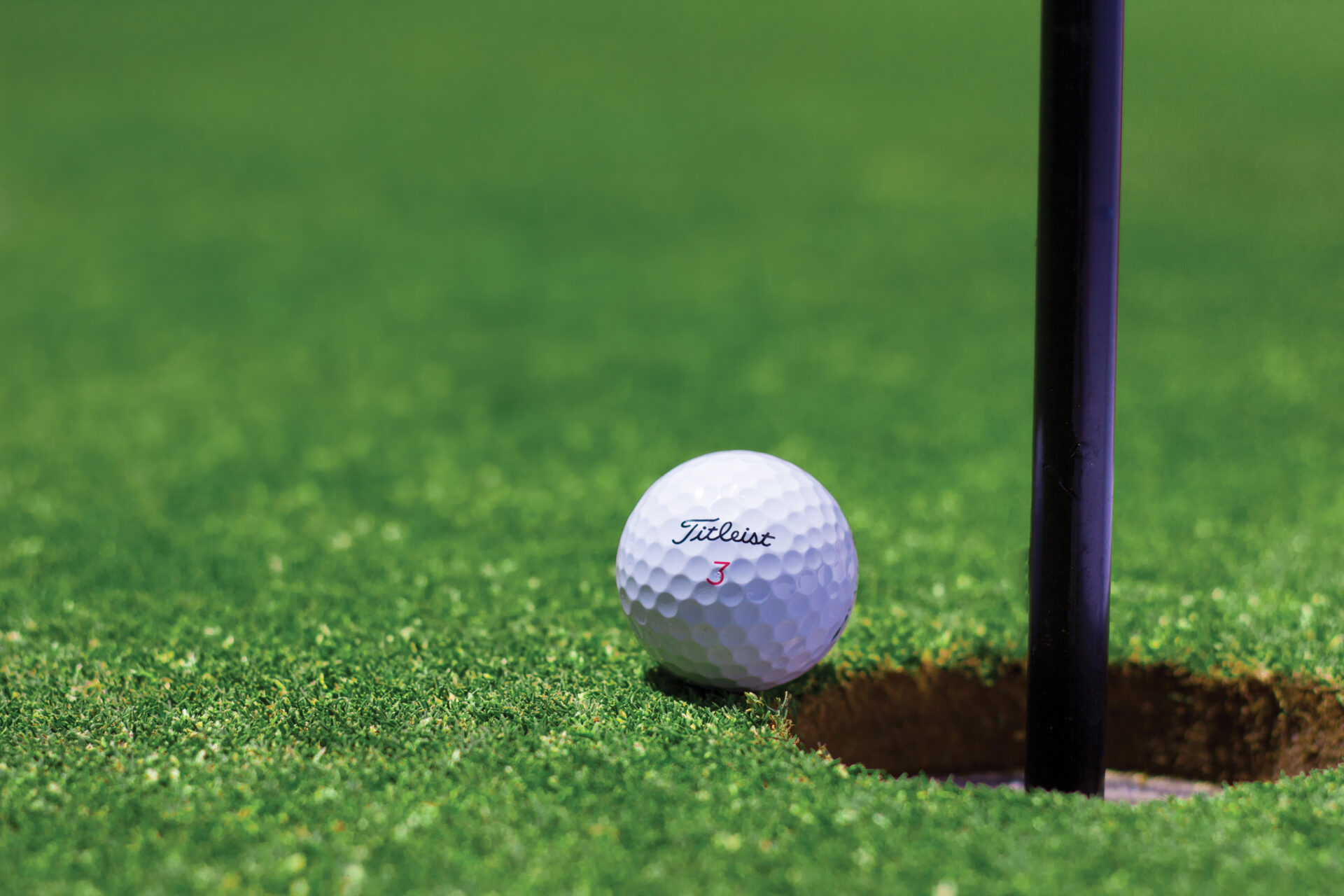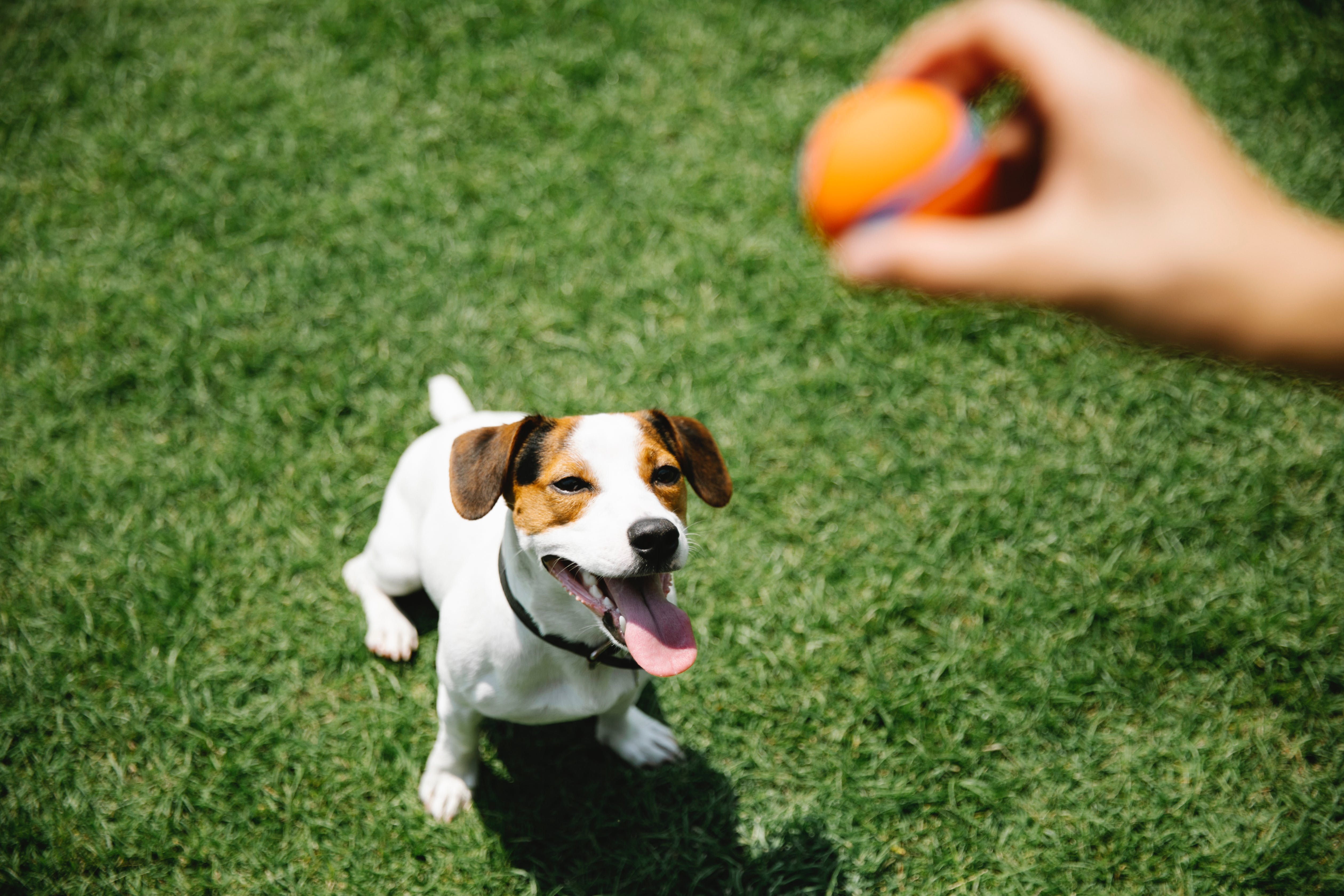Hitting down on a golf-ball/” title=”How Many Dimples Golf Ball”>golf ball is an important technique to master if you want to improve your game. It is a vital part of the swing that will help you generate more speed and power on your shots. By learning how to hit down on the ball correctly, you can increase your distance and accuracy off the tee. With practice and dedication, you can master this skill and take your game to the next level. In this article, we will discuss how you can hit down on a golf ball properly in order to maximize your performance on the course.The downswing in golf is the second half of the golf swing, which follows the backswing and leads into the impact zone. The downswing is an important part of the golf swing, as it sets up the club to be in an effective position at impact. To perform a successful downswing, a golfer must focus on creating a smooth transition from the backswing to the downswing by maintaining their posture and using their core muscles to control their movements. Additionally, they should use their arms and hands to control the club’s movement throughout the swing. The goal of a successful downswing is to create an efficient transfer of energy from your body to your clubhead, which leads to solid contact with the ball and consistent shots.
Aiming the Clubface
Aiming the clubface correctly is essential for any golfer who wants to hit quality shots. This can be a tricky skill to master because it involves both physical and mental aspects. The physical aspect involves setting up correctly with the correct posture and grip. The mental aspect requires the golfer to be aware of where they want the ball to go before they hit it.
In order to aim properly, a golfer must ensure that their feet, hips, and shoulders are all lined up correctly with the target. This alignment should be maintained throughout the swing in order for the clubface to stay square at impact. To achieve this, a golfer should practice slowly setting up to shots and making sure their alignment is correct before each shot.
Maintaining focus on the target is also key when aiming correctly with the clubface. A golfer should take their time during each shot, focusing on where they want the ball to go and allowing themselves enough time between shots to ensure that they are properly aligned and focused on their target. Additionally, a golfer should use visual cues such as an alignment stick or aiming line on the ground in order to accurately aim their shots.
By following these steps, a golfer can improve their ability to aim with their clubface correctly and consistently hit quality shots. With practice and patience, any golfer can learn how to aim correctly and improve their overall game of golf.
Setting Up Properly for a Downswing
Setting up properly for a downswing is an essential part of the golf swing. Proper setup can help you hit the ball with more accuracy and distance. It can also help you avoid potential injuries and maintain a consistent swing. Here are some tips to help you set up properly for a downswing.
The first step is to ensure that your feet are pointing in the correct direction. Your feet should be parallel to the target line, which is typically how you would aim your clubface. Additionally, make sure that your feet are shoulder-width apart, as this will give you better balance and stability during the swing.
Next, make sure that your posture is set correctly. Your spine should be slightly tilted away from the target line and your arms should hang naturally at your sides. This will allow you to maintain a stable posture throughout the entire swing and help prevent any potential injuries from occurring.
It’s also important to ensure that your grip is correct. Make sure that your left hand is gripping firmly on the club, with all four fingers wrapped around it, while your right hand should be lightly gripping it just enough to keep it steady during the downswing. This will ensure maximum control over the clubface during impact with the ball.
Finally, make sure that your head remains still throughout the entire downswing. Many golfers tend to move their heads during their downswings, which can cause them to lose control over their shots as well as disrupt their timing and tempo. Keeping your head still during this part of the swing will help ensure that you have a consistent motion throughout your entire swing and help improve accuracy and distance on each shot.
By following these tips and setting up correctly for a downswing, you’ll be able to hit longer drives with more accuracy and consistency than ever before!
Starting the Downswing with Core Rotation
When it comes to a golf swing, the downswing is one of the most important parts. To ensure an efficient and powerful downswing, it’s essential to start it correctly. Starting with core rotation is one of the best ways to do this. The core muscles are responsible for helping create and maintain good posture, and they also play a key role in generating power and speed during the downswing. By initiating the downswing with core rotation, you can ensure that your swing is powerful and consistent.
The key to starting the downswing with core rotation is to engage your abdominal muscles as soon as you begin moving your arms back towards the ball. Your abdominal muscles should be tense and engaged throughout your entire swing, as they are responsible for keeping your upper body stable while you generate power from your legs and hips. When you initiate the downswing with core rotation, you create a powerful base from which to generate speed and accuracy in your golf swing.
It’s also important to keep your head still during this part of the swing. Keeping your head still will help ensure that all of your power is focused in one direction, rather than being wasted by unnecessary movement in other directions. Keeping your head still will also help make sure that you don’t lose balance or posture during the swing.
Finally, when initiating the downswing with core rotation, it’s important to pay attention to how quickly you move through each stage of the swing. Moving too quickly can lead to a loss of control or an inconsistent shot, while moving too slowly can reduce power and accuracy in your shots. Paying close attention to how quickly you move through each stage of the swing will help ensure that you have maximum control over every shot.
Starting the downswing with core rotation is an important part of any golf game. By engaging your abdominal muscles early on in the swing, keeping your head still throughout, and paying attention to how quickly you move through each stage of moving into position for hitting the ball; you can ensure that every shot is powerful and accurate.
Initiating the Swing with Shoulders and Arms
The golf swing begins with the shoulders and arms. The shoulders should start the downswing by rotating back and down, leading the arms to follow. This is done by transferring weight from the right side to the left side of your body. It is important to keep your arms in front of your chest as you make this transfer of weight. As you rotate your shoulders, your arms should stay close to your body, but not too close that it restricts your shoulder turn. Your wrists should remain in a neutral position and not be bent or overly extended as you initiate the swing with your shoulders and arms.
Once you have initiated the downswing with your shoulders, you can then begin to move your arms and club towards the target. This motion should be continuous and in a smooth rhythm so that all parts of the swing are connected together. As you move towards impact, make sure that you keep rotating through with your upper body while maintaining a strong grip on the club. Doing so will help generate speed and power as you reach impact, resulting in greater distance off of the tee.
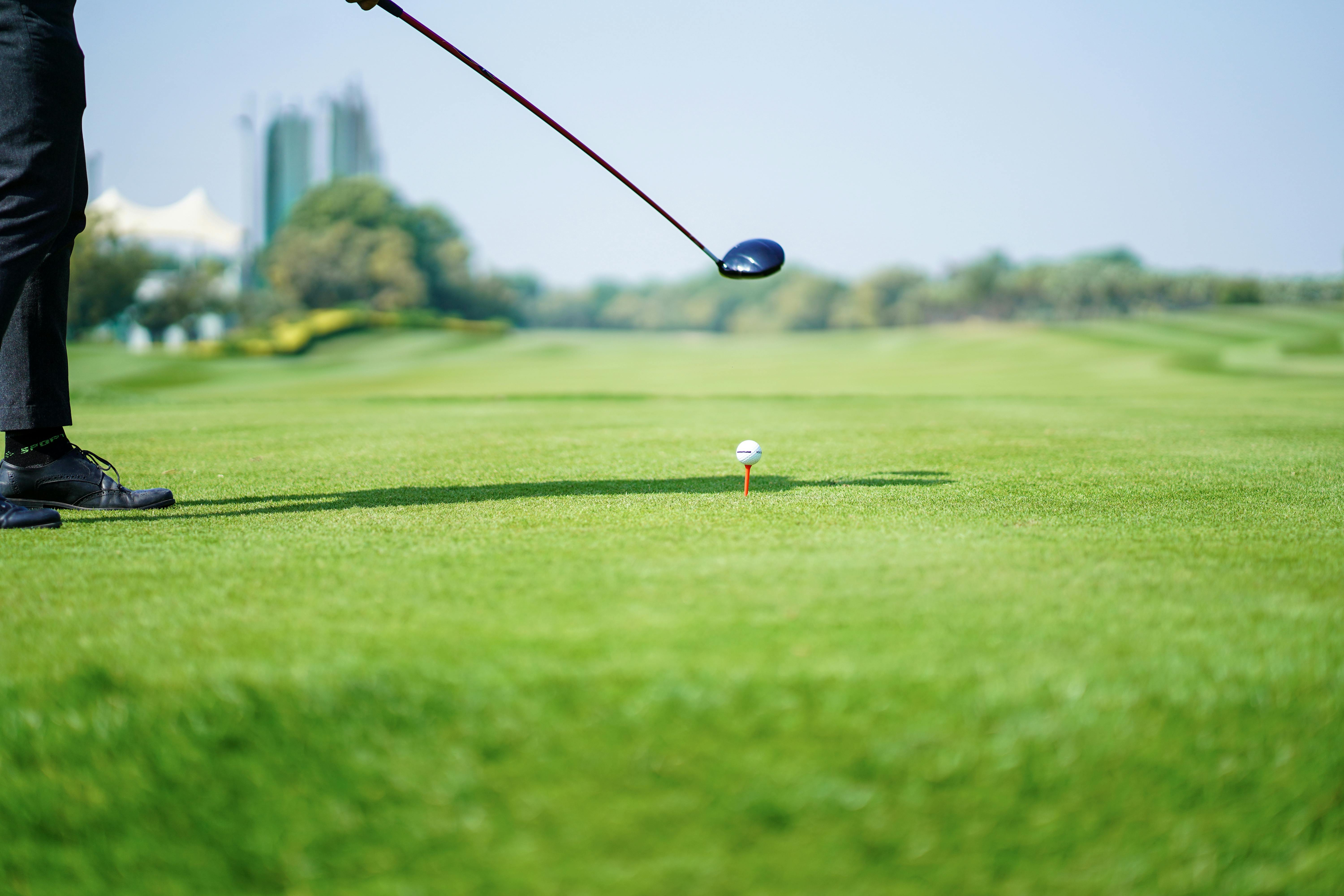
Releasing the Clubhead through Impact
Releasing the clubhead at impact is an important aspect of golf. It is essential for a golfer to know how to properly release the club head in order to get the most out of their shot. Releasing the clubhead through impact is a skill that must be developed over time and with practice. The proper release of the clubhead will allow for maximum power in a shot and provide more control and accuracy.
When releasing the clubhead, it is important to ensure that you keep your arms and body straight throughout the motion. This will help maintain momentum as you begin your downswing. It is also important to keep your hands and wrists in line with your arms as you make contact with the ball. Make sure that your wrists remain loose, as this will allow for a smoother transition of power from your arms to the club head when it hits the ball.
Another important factor when releasing the clubhead at impact is timing. Timing is key in order for a golfer to get maximum power from their shot. This means that you must start your downswing at just the right moment so that all of your power can be transferred into the ball at just the right time. If done correctly, this will give you more control over where your ball goes and enable you to make more accurate shots.
Finally, it is important to remember that releasing the clubhead correctly takes practice and dedication in order to master it. You must continue to work on perfecting this skill so that you can maximize your potential on every shot!
Using Hips and Legs for Power
When it comes to generating power in sports, the hips and legs are the foundation for explosive movements. From football to baseball, athletes rely on their legs and hips to drive their performance. Whether it’s a jump shot or a deep ball, the power generated from the lower body is essential for success.
The use of the hips and legs is especially important in sports such as golf, where rotational power is key. When hitting a driver off the tee box, golfers need to generate maximum torque with their lower body to get maximum distance. The same is true with other rotational sports such as tennis and baseball.
In order to generate maximum power with your hips and legs, proper mechanics must be employed. This means having good posture throughout your swing or shot, as well as transferring weight from your back foot to your front foot during the movement. This will help you create torque in your lower body that can be transferred into power when you make contact with the ball or club.
It’s also important to engage your core muscles during these movements. This will help you maintain balance while also providing stability so you can focus on generating power with your hips and legs. Strengthening exercises such as squats, lunges, and deadlifts will help build strength in these areas for more explosive movements in sports like golf and baseball.
Using your hips and legs correctly can give you an edge on the field or court by allowing you to generate more power with each movement. Taking time to practice proper mechanics will ensure that you are able to maximize your performance when competing in any sport that requires explosive movements from the lower body.
Finishing the Swing with a Follow Through
Completing a golf swing with a proper follow through is essential to playing an effective shot. The follow through is the final part of the swing and it helps to ensure that the ball is hit correctly. A good follow through will also help maintain balance and control during the swing. It is important to maintain good balance throughout the entire golf swing and this can be done by finishing with a solid follow through.
The follow through should start after impact as the club head continues to move forward, up, and around in an arc shape towards the target. The arms should remain extended throughout this movement, while keeping wrists slightly flexed for power and control. As the club nears completion, it should finish in line with your feet, parallel to the target line.
When you finish your swing, it’s important to let your arms hang naturally down by your sides while maintaining balance on your left foot if you are a right-handed player. This will ensure that all of your momentum from your backswing has been released properly. If you stop short of completing the follow through or come out of position too soon, you may lose power and accuracy on your shot.
Properly finishing a golf swing with a follow through can greatly improve both accuracy and distance on your shots. By keeping good balance throughout, maintaining arm extension, and finishing in line with your feet parallel to the target line, you will be able to hit more powerful shots that are more accurate overall.
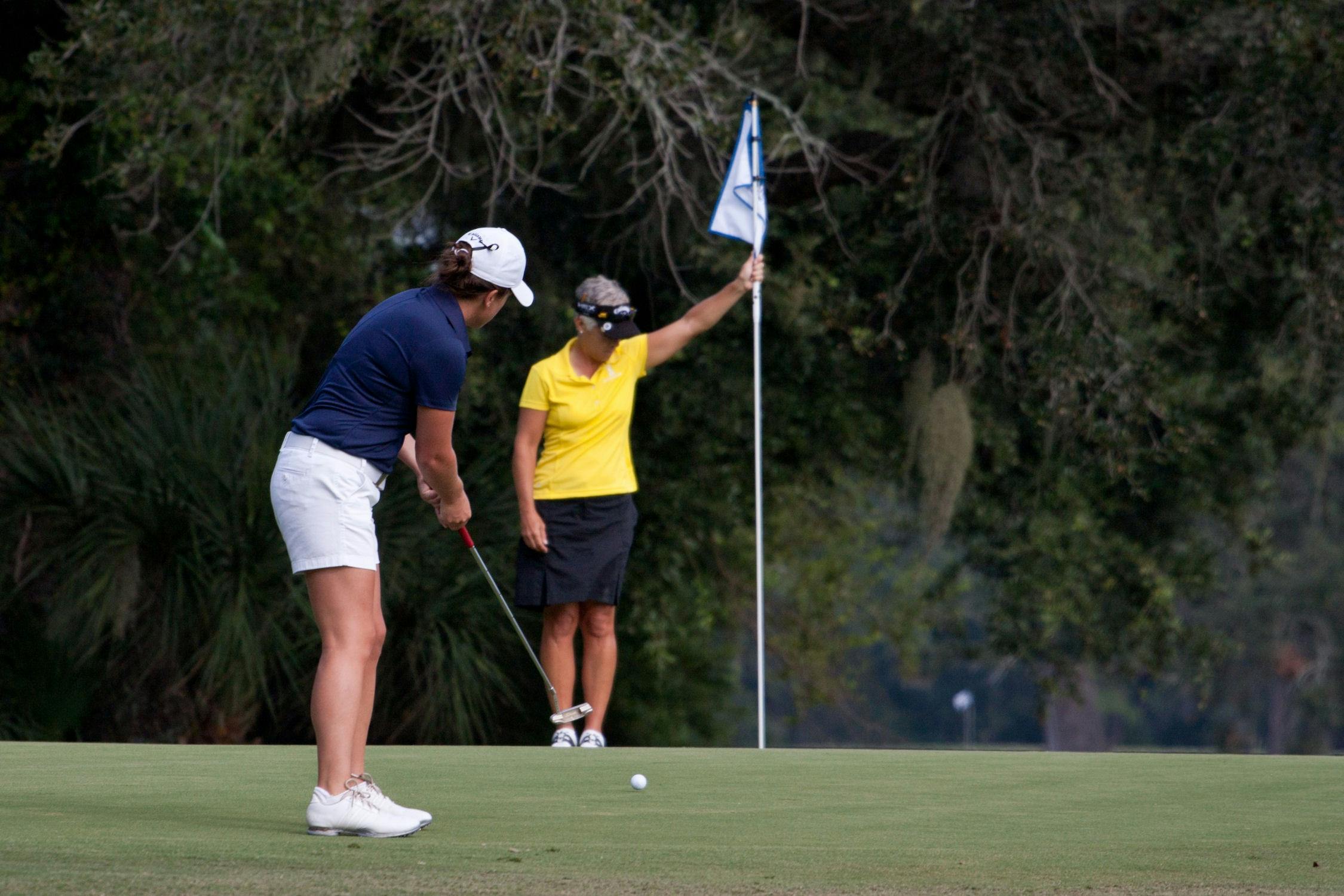
Conclusion
Hitting down on a golf ball is essential to producing good results on the course. If you can master the technique, you’ll be able to hit the ball straighter and longer with more control. To achieve this, make sure your arms and shoulders are in the correct position, and that your weight is shifted slightly forward when making your swing. At impact, ensure that you strike the ball first and then the ground. You should also make sure that you’re using a downward motion with a slightly descending angle of attack. With practice and repetition, you should be able to master this technique and see improved results on the course.
Remember that hitting down on a golf ball requires patience and dedication – but it’s worth it in the end. Don’t get discouraged if you don’t achieve success right away; keep practicing and perfecting your technique until you find success on the course. With enough practice, you’ll be able to hit down on a golf ball confidently and consistently, enabling you to shoot lower scores more often.

